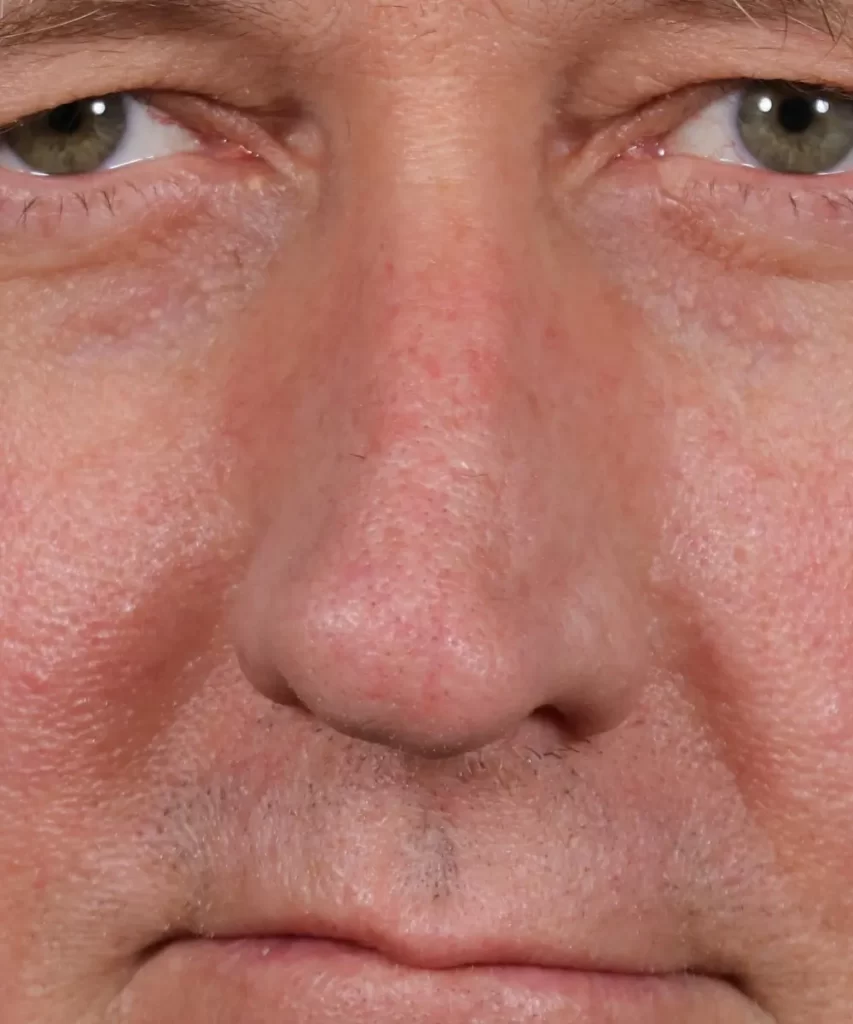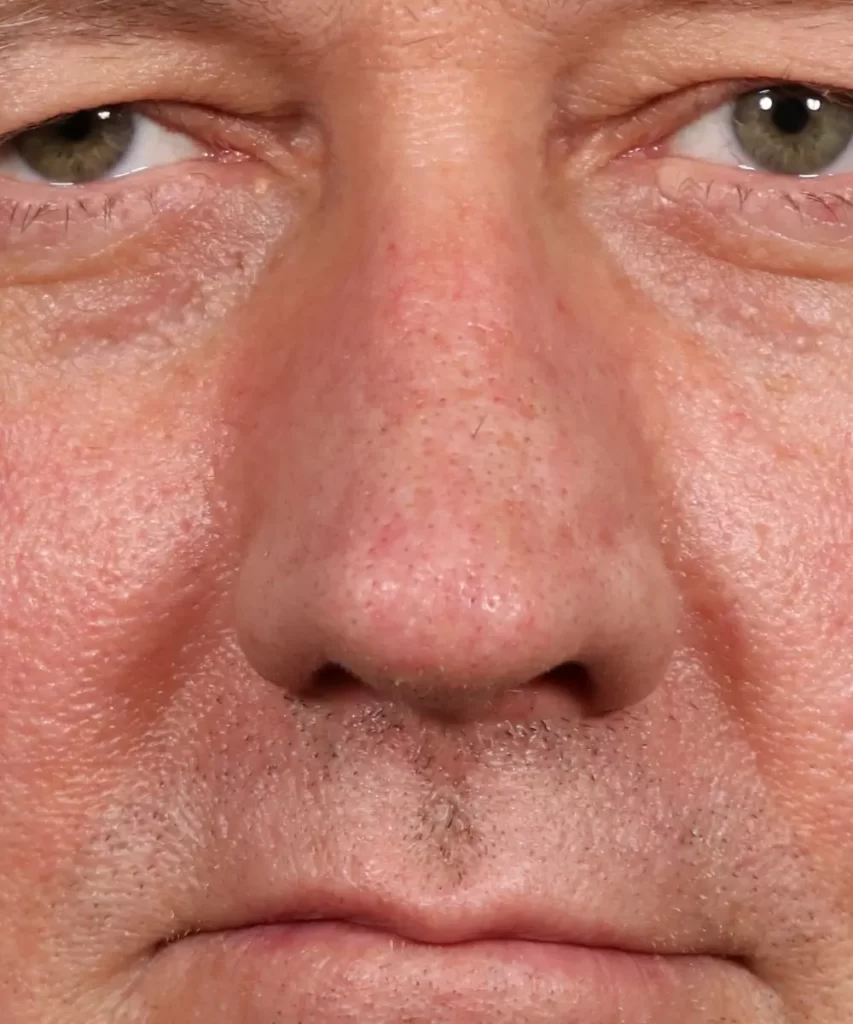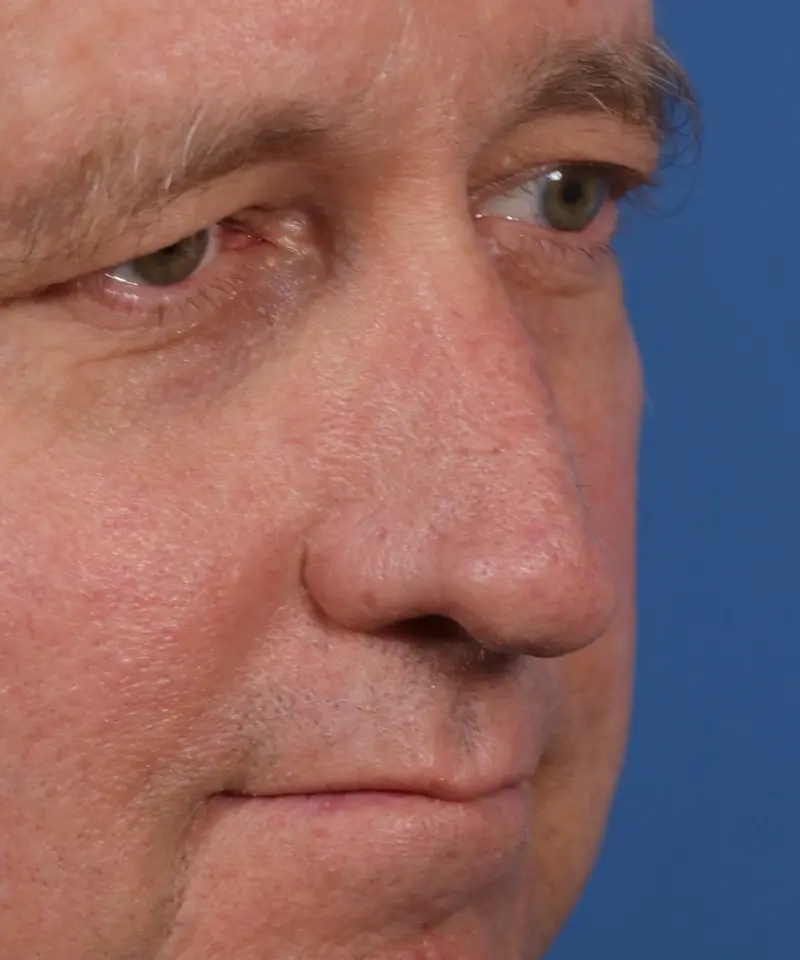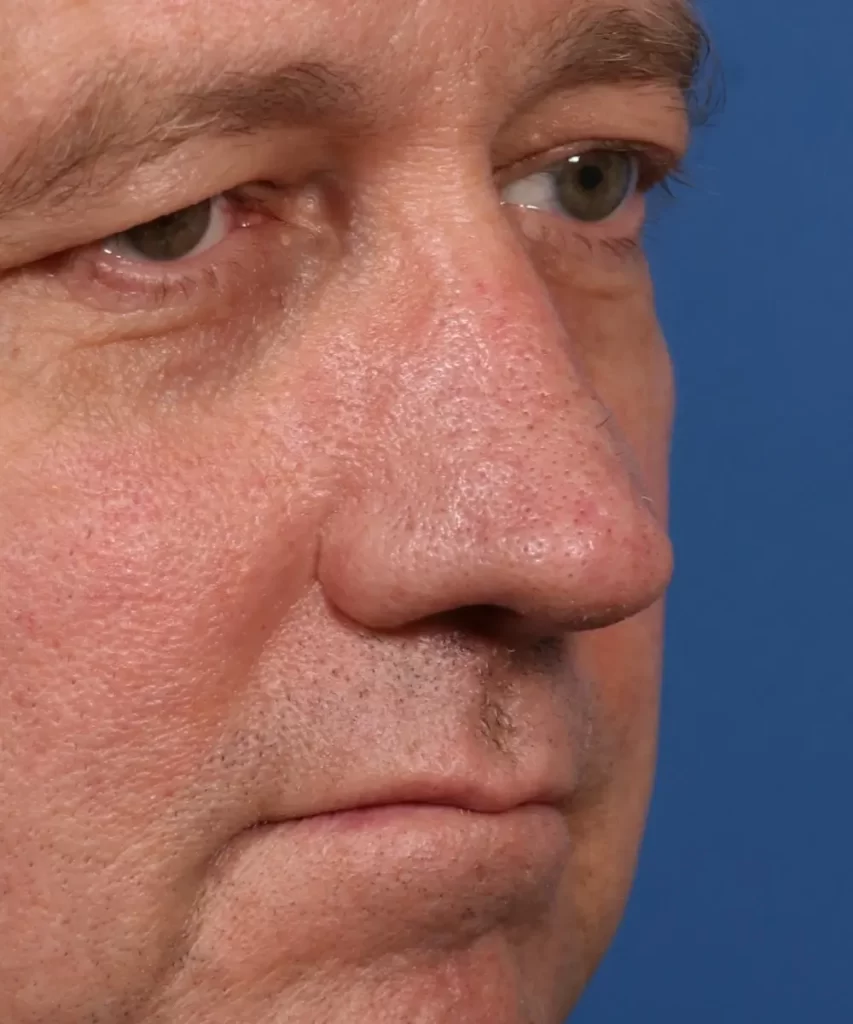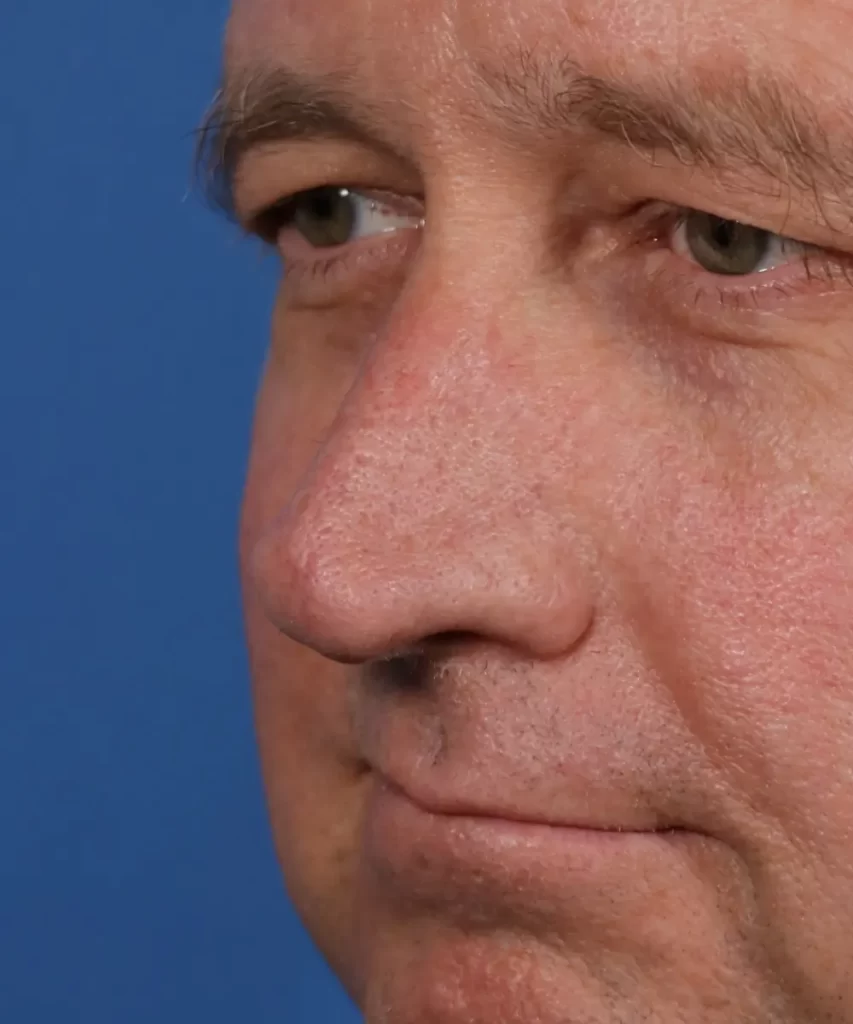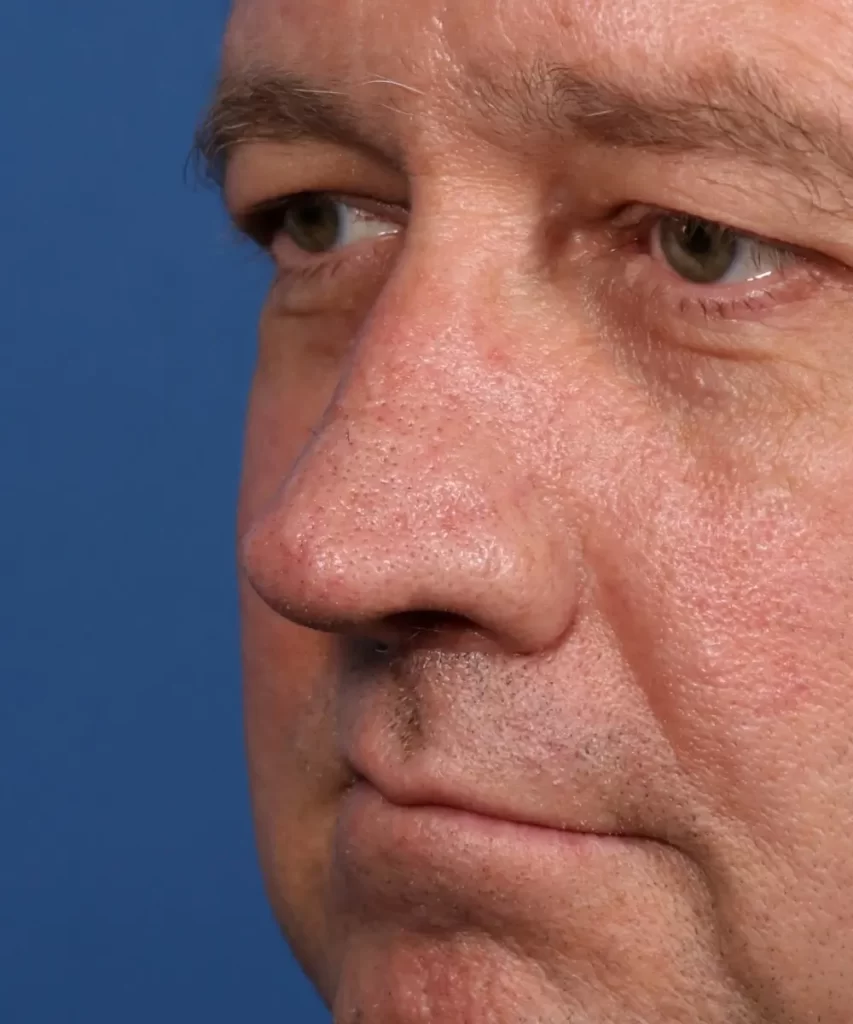There are a lot of patients who undergo rhinoplasty or septorhinoplasty surgery for functional reasons. Here is a great example of this operation, which can result in some nice passive changes to the appearance of the nose.

This patient was having trouble breathing through his nose – largely due to the fact that his tip cartilages were markedly abnormal. When you looked closely, his tip was quite asymmetrical – meaning, it was very different side to side. This was the root cause of his nose not functioning well – because the collapsed tip cartilage wasn’t allowing for air to be passed through in an easy manner.
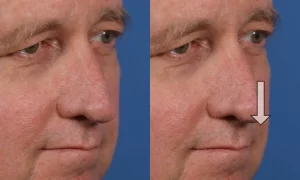
Normally, the tip is made up of relatively symmetrical, or even, cartilage on each side. These are called the lower lateral cartilages in the world of plastic surgery. In most cases, this pair sits in a stable position near the tip of the nose. In situations, like this one here, where one of the paired cartilage segments drops down, it can result in a smaller nostril opening. You can see in the adjacent oblique photo of his nose that the left side of his tip (right side in the photo) is literally hanging down, or drooping. This type of problem can impede proper breathing through the nose. No matter how much medication is tried, the abnormal structural problem will simply not allow ideal breathing. In these situations, surgical reconstruction of the nose is really the only option.
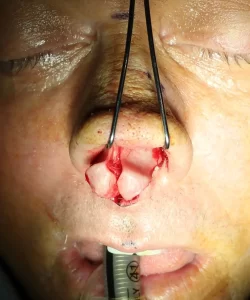
This particular patient was evaluated by a local board certified ENT/Head and Neck Surgeon in San Diego – who subsequently referred him to Dr. Hilinski given his widespread reputation as a rhinoplasty expert. Dr. Hilinski recommended an open reconstructive rhinoplasty where an incision was used under the tip of the nose to create proper exposure of the cartilage.
In the adjacent photo taken during his actual surgery, you can see just how twisted and asymmetrical the cartilage was upon exposure. Normally, these two segments would be much more equal in size, shape and location. In this case, his left side (your right side) extended further down toward his lip and his right side was pushed over to the side. These surgical findings were no surprise when the skin was lifted up. But this still required a fairly complex reconstructive effort by Dr. Hilinski to restore proper structural integrity to his nasal tip.
Reconstructive Rhinoplasty Results
Here are some results of this effort by Dr. Hilinski. As you can readily see, there is a dramatic improvement in the shape and position of his nasal tip. He now has a much more normal nasal tip that is fairly equivalent from left to right. When you look at the oblique view seen above, you can easily appreciate how his left side has been brought up nicely to project out in a proper manner. The end result of this type of work is a nose that has improved structural support with markedly better function.
